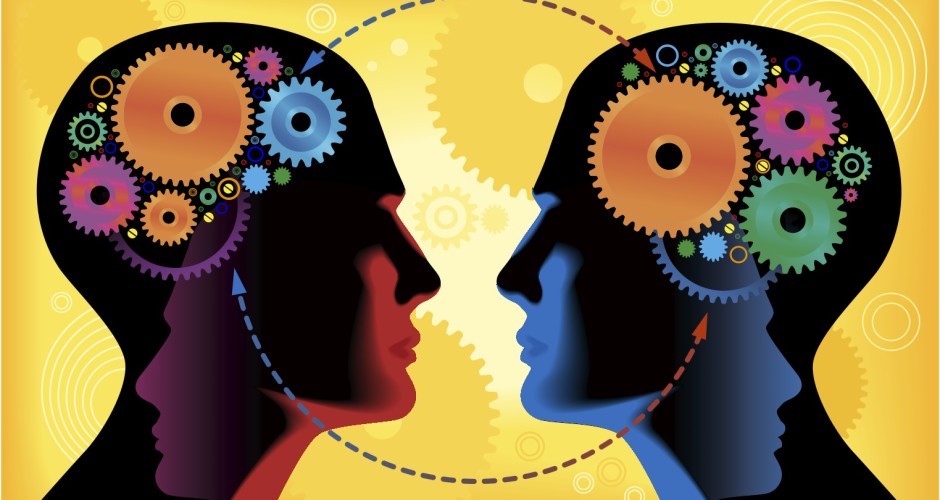An excellent interaction between an American ‘white’ Hindu responding to accusations of Hindu fundamentalism in a very interesting debate.
I was commenting on social media yesterday about the sort of love evident in Prime Minister Narendra Modi’s statements of support to Pakistan in light of the massacre in Peshawar that took over 140 victims, and a recent acquaintance of mine asked me the following question
The acquaintance says :
‘Alachua, you wrote something that puzzles me, that Hindus are peaceful. From what I know of history of the British colonies, there has been trouble between the Muslims and Hindus since the Mughal invasion. Both India and Pakistan got the bomb because they do not trust one another’s intentions. Gandhi was assassinated by a “fundamentalist” Hindu, correct?
I don’t know of any religion that is completely pacific, not even Buddhism. Every religion is capable of killing in its god’s name, and has fringe elements that hate and are more than capable of genocide. I distrust religion. I am a good thirty years older than you, I suspect. Nothing that I have seen of the world would make me believe in the good of religion. It is there to divide, conquer and control populations’
Alachua’s Reply :
You seem to have digested the popular narratives that the West has created about Hinduism. It will take a little while, but I think I can provide some perspective on what Hinduism is and is not. I acknowledge your seniority, and I have great respect for those with more experience than I myself possess, so I will lean on the authority of those who have gone before me in an unbroken tradition reaching back into the ice age, and manifesting in the last unextinguished light of classical Indo-European civilization.
On Pacifism
This is a fairly recent narrative pushed by the British to denigrate Hindus. It is supported by the Gandhi story, which is a deep and malicious obfuscation of reality. You have probably been told a story that the British de-colonized the subcontinent due to the non-violent protests of an elderly gentleman in a loincloth. You will have some familiarity with the British mentality – does that ring true to you?
The British fought most of their wars in the 19th and early 20th century with Indian (that is to day, Hindu) armies, including the very successful 2nd Anglo-Afghan War, the Boer Wars, and so on. Then, during World War II, the Indian navy refused to fight for them.
When a colonial power can no longer control their own military forces, they can no longer control their colony. There were a string of similar incidents that, coupled with the obliteration of the British economy following the war, necessitated de-colonization. A weak Hindu seemed a nice way to save face.
Gandhi’s Congress Party was “Secular” in the South Asian sense, that is, the embodiment of the colonialized mind, fully obedient to the cultural norms of the West, and something like an Oreo cookie, a Macaulayan dream come true.
“We must at present do our best to form a class who may be interpreters between us and the millions whom we govern; a class of persons, Indian in blood and colour, but English in taste, in opinions, in morals, and in intellect. To that class we may leave it to refine the vernacular dialects of the country, to enrich those dialects with terms of science borrowed from the Western nomenclature, and to render them by degrees fit vehicles for conveying knowledge to the great mass of the population…” Thomas Babington Macaulay, Minute on Education, 1835
The fact that the governance of the country was being turned over to that English-speaking, elite, capo class infuriated many Hindus – and rightly so, for having suffered a thousand years of jihad from Muslims, a century of Company Rule and a century of Crown Rule, they were ready to have their country back, only to find it still firmly in the grasp of Westernized Indians who made elaborate giveaways to Muslims to cement their voting block.
Indeed, in India, Congress is known as “Khangress” (“Khan” being a common Afghan title/name associated with Muslim invaders). It was indeed a Hindu who killed Gandhi, and I can fully understand the assassin’s motivations.
Finally, I would remind you that the Indian national epic Mahabharata, and it’s excerpt the Bhagavad Gita, is set in a great war during which Krishna explains to Arjun that he must fight against the forces of disorder and injustice, not because his “god” says so, but because it is not the place of good people to sit idly by and watch evil prevail.
“Hinduism”
In the Zoroastrian Avesta, Sanskrit “S” sounds generally become “H” sounds. “Hindu” comes from “Sindhu” – the Sanskrit name of the Indus (Latin name) river, and refers vaguely to the cultural practices of the Indus watershed (roughly modern Indian and Pakistani Punjab). As a term, it describes geography, and not any particular practice – of which there are many thousands.
“Hinduisms” may be a better term, but in Sanskrit these practices are called “Sanatana-Dharma” (Sanatana = eternal, Dharma = the intrinsic nature of something). They are practices (for the Eastern traditions center on orthopraxy more than orthodoxy) designed to bring one into a relationship with Truth (or Truths, for we are not Exclusivist, and many paradoxically contradictory realities can/are “True”) or Reality (or Nature, to borrow from Spinoza).
This reality (the only thing that exists, for we believe it to be a single entity, and not split into a Creator/Creation duality) is what one could call “God” – though this is using a loaded Western term to convey something that does not exist in Hinduism.
Essentially, to paraphrase comedian/philosopher Bill Hicks, we are all parts of one consciousness exploring itself subjectively. The implication is that you and I are one organism perceiving each other through different eyes. This philosophy creates a far different mentality – one of empowerment and decentralization – than the purely political Abrahamic monotheisms modeled after God as divine tyrant and potter.
We concentrate on “god” within us, not outside of us. You and I are both god, if you like, manifestations of the ultimate energy (“OM”) meeting ourselves along different vectors in our time-travelling spaceships that we conceptualize as bodies. From such a perspective, it is difficult to impose one’s will upon everyone as seems to be the thrust of organized, political, hierarchical Abrahamic monotheisms.
This will inevitably bring up the caste system, as this is the principle narrative used to assail Hinduism. In fact, it does not exist in Hinduism. It exists in India, but it is more a product of Mughal social organization built on Jati (occupation) than Vedic Varna – literally “color” but referring to the 3-4 basic types of personality we typically find manifesting in the world. Varna was a feature of many Indo-European cultures, from the Celts to the Romans and even most Near-Eastern civilizations. The idea goes that people have certain propensities.
Some are governed by their mind, and seek knowledge and self-realization. Some are motivated by their hearts, and form a warrior and administrative class. Others are motivated by the stomach, and gravitate toward mercantile endeavors, and some of these same people are still developing, and form a basic laboring class. These four are not hierarchical, but interdependent, and have reciprocal duties to each other.
The Brahmin carry humanity’s knowledge into the future, and serve the intellectual and spiritual needs of all. They are sponsored by the Kshatriya, who protect the people and organize society for mutual benefit, their qualification to rule lying in the well-being of their people. The Vaishya generate the wealth that benefits society, channeling labor into means to be organized and redistributed by the Kshatriya.
Finally, the humble Shudra work, but are otherwise tended to by their society. Religious practice varies for each, and may have overlap with the next – as people may exhibit blended qualities along a continuum. In India, work is worship, and it is not necessary to go to temple, and no salvation is required – we are already divine (to paraphrase the incomparable Dr. Rajiv Malhotra).
Religion
A brief comment about Yoga – “Yoga” means to link (cf. Latin religare – to “re-link”), and is etymologically related to our word “yoke” – which is a thing that links two animals. Krishna describes four principle kinds of Yoga in the Gita: Jñana (or Gyan), Bhakti, Karma, and Raja. Gyan means knowledge, and would be analogous to science and philosophy combined (you will note that India produces both great scientists and philosophers, like Dr. Amit Goswami, who literally wrote the book on Quantum Physics).
Karma means work, and in so much as you fulfill your societal obligations, you have conducted a worship of sorts as service to the divine in the form of other consciousnesses. Bhakti means devotion – you may be familiar with this from the Western tradition or perhaps the Hare Krishna movement. Raja means king, and is the sort of Yoga that great Yogis conduct in the forest, and the one that gets ripped off as exercise in the West (so help me, it’s like taking a quantum computer and marketing it as a paperweight).
In India, Hinduism has many forms of organization – from a single yogi looking for self-realization, to the farmer plowing his field, to the woman nursing her infant, to the young seeker singing in ecstasy, to the priest in the temple offering fire and incense – and all are valid. This is clearly not a system designed first and foremost to subjugate people, but to free them to find themselves for themselves – by themselves or collectively. Indeed, this is the greatest threat to Abrahamic monotheisms in the world today, and the reason why they have fought against it for millennia.
End































